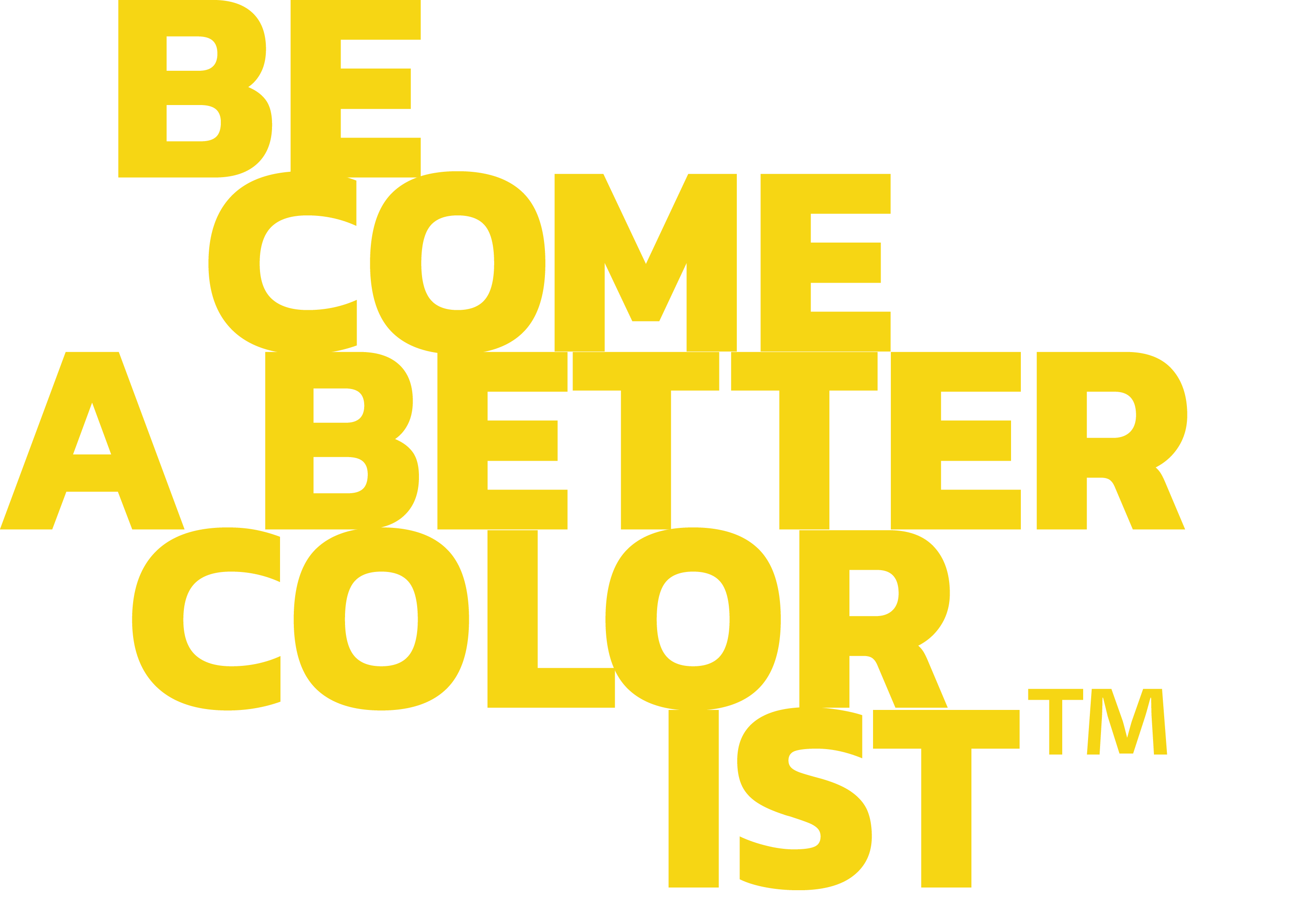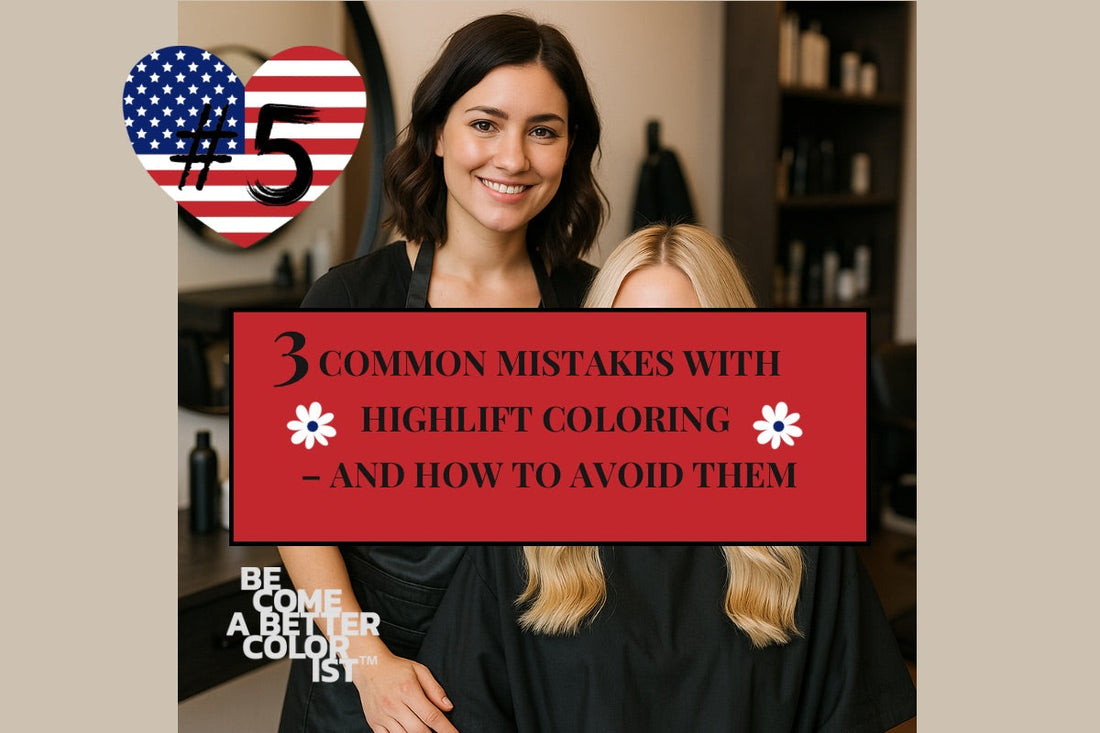This blog post is also available as an audio blog.
👉 Click here to listen on Spotify: #5 3 Common Mistakes with Highlift Coloring – and How to Avoid Them, As an audio blog on Spotify
3 Common Mistakes with Highlift Coloring – and How to Avoid Them
I remember a moment a couple of years ago, during one of my trainings, when we were working practically with highlift color. One of the participants had brought a model who wanted to go lighter for the summer – but with one clear request: no bleach.
We stood there with all the options in front of us. The obvious choice was highlift. You know – that color that often ends up in the back of the color cabinet, the one many avoid using because they’re not sure how it actually works. I’ve heard hairdressers say it “just sits there and costs money every day.”
I recommended a shade I knew would work and that was well tested – a highlift with a green-blue base, since we needed to counteract the undertones we knew would appear during the process. But the hairdresser chose another path. She was determined to use a violet-based color, as she focused solely on the target level – not the underlying pigments that would surface on the way there.
She got her way. The result? Orange.
One of the worst-case scenarios when the goal is a cool blonde shade.
To be able to tone to a nice cool color, we first need to lift the hair to yellow. Yellow is workable. Orange, on the other hand, is significantly harder to cool down without it looking muddy or dull.
And this is where many go wrong: they only look at the undertone of the level they want to reach – but forget to consider all the undertones that appear on the way.
It wasn’t a bad effort – just a clear example of what happens when you don’t fully understand how the product works.
And this is exactly what’s so often missing:
Highlift requires knowledge to deliver results.
Today, I love highlift – but there was a time when I avoided that type of color too, because I got anxiety just thinking about using it. Everyone who’s taken my classes knows that I often choose highlift before bleach – provided the analysis shows it’s the right option.
That’s also why I created a training that focuses solely on the difference between highlift and bleach. Because highlift coloring is still one of the most misunderstood areas in hair color.
Here are three common mistakes I often see – and how to avoid them.
1. You go straight to bleach – without even testing highlift
Many hairdressers go straight to bleach when a client wants to go lighter. And sure, sometimes it’s the right choice. But not always.
Some hair shouldn’t even see a bleaching product. Still, many go for bleach without even doing a proper analysis – one of our most important tools.
Highlift products are often gentler, already contain pigment, and offer more control. So before you automatically mix up bleach – pause.
Look at the hair. What’s the level? The quality? Have you even tested what your highlift can do?
Tip:
Always do a correct analysis. It makes the choice easier. A levelfinder with the correct level and undertone scale is an invaluable tool.
2. You don’t have the right expectations for your product
A classic: you choose a light blonde highlift with an ash tone and think it will magically remove all the yellow. But the result turns out… warm.
The problem? You forgot what lies underneath.
When doing highlift coloring, you must account for the hair’s natural pigment – the undertones that come up as we lighten.
A highlift on a level 6 will bring up a strong orange undertone, which must be neutralized with the correct tone and the right amount of pigment. The tube shows the direction – but your knowledge determines the outcome.
Tip:
Always think in two steps:
• What undertone will appear?
• What tone do I need to neutralize it?
Then you’re in control – instead of being surprised.
3. You mix too much – and lose the effect
A common mistake is mixing too much color at once. But remember: as soon as you mix, oxidation begins. Highlift is most effective during the first 15 minutes.
Many think there’s something wrong with the product – but it’s usually that we don’t follow the manufacturer’s guidelines.
Highlift is a powerful tool. But only if it’s used correctly.
Tip:
Always read what your product requires – the right developer and the correct mixing ratio. Brands vary. Use the developer recommended by the brand, as it’s matched to give the best results.
What I want you to take with you
Highlift is not a replacement for bleach – but it’s a fantastic complement. The key is understanding what the product can do, the chemistry behind it, and above all: trusting your analysis.
Coloring is a craft. The more you understand, the freer you become in your creativity.
We must stop seeing highlift as the “second-best” option. Use it as the smart, gentle, and conscious tool it truly is.
And next time you’re standing there with the color bowl in your hand – ask yourself:
• Have I tested?
• Have I analyzed?
• Or am I just doing what I’ve always done?
Maybe you’ll be just as surprised as many hairdressers are when they start using the product – after learning how it actually works to achieve the best results.
Do you also want to understand the difference – and know why it works? Then I hope to see you at one of my trainings.
/Camilla Rörstrand
Want to learn more?
📘 Read the book Become A Better Colorist
🎓 Or book a spot in the training The Power of Product – Lighten Hair the Right Way

